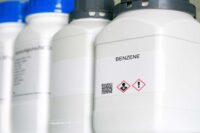Refinery Settlement Includes Electric Lawn Equipment
On September 6, 2023, the EPA announced it reached a settlement with Suncor Energy Inc. (Suncor) resolving alleged violations of the Clean Air Act’s (CAA) fuels requirements at Suncor’s Commerce City, Colorado, refining operations. Suncor will pay a $160,660 civil penalty and has agreed to implement a supplemental environmental project, which requires the company to […]










